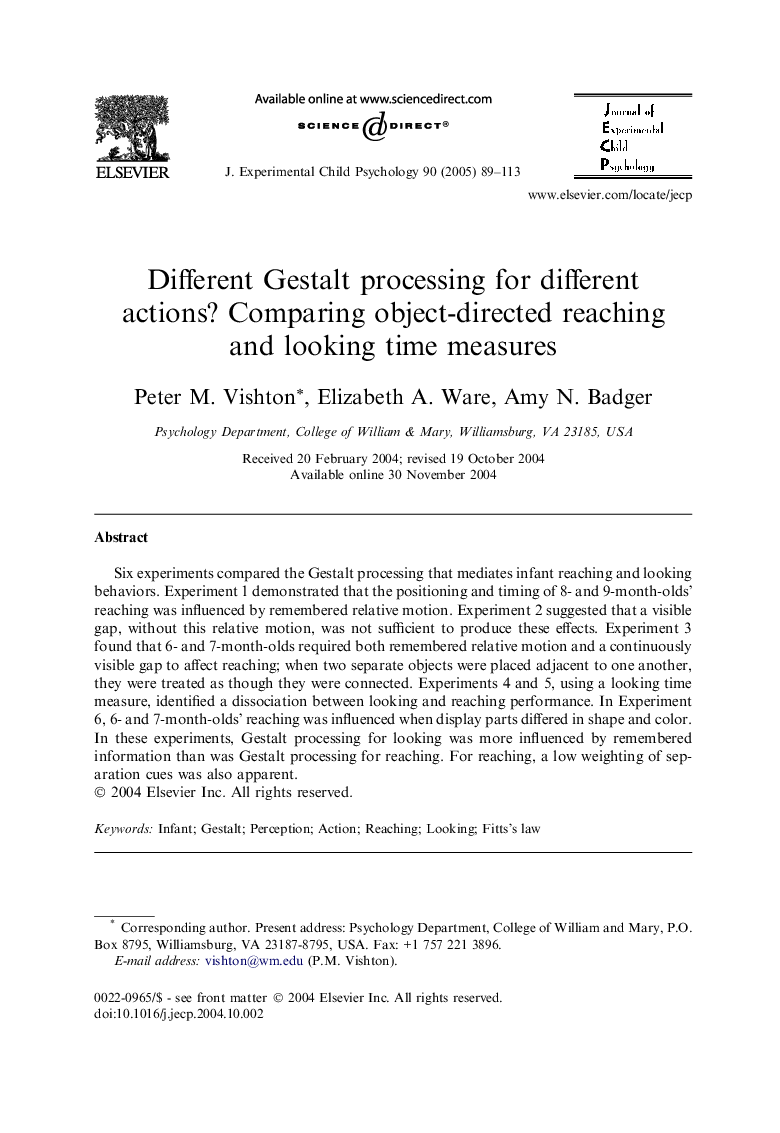| Article ID | Journal | Published Year | Pages | File Type |
|---|---|---|---|---|
| 10453241 | Journal of Experimental Child Psychology | 2005 | 25 Pages |
Abstract
Six experiments compared the Gestalt processing that mediates infant reaching and looking behaviors. Experiment 1 demonstrated that the positioning and timing of 8- and 9-month-olds' reaching was influenced by remembered relative motion. Experiment 2 suggested that a visible gap, without this relative motion, was not sufficient to produce these effects. Experiment 3 found that 6- and 7-month-olds required both remembered relative motion and a continuously visible gap to affect reaching; when two separate objects were placed adjacent to one another, they were treated as though they were connected. Experiments 4 and 5, using a looking time measure, identified a dissociation between looking and reaching performance. In Experiment 6, 6- and 7-month-olds' reaching was influenced when display parts differed in shape and color. In these experiments, Gestalt processing for looking was more influenced by remembered information than was Gestalt processing for reaching. For reaching, a low weighting of separation cues was also apparent.
Related Topics
Social Sciences and Humanities
Psychology
Developmental and Educational Psychology
Authors
Peter M. Vishton, Elizabeth A. Ware, Amy N. Badger,
